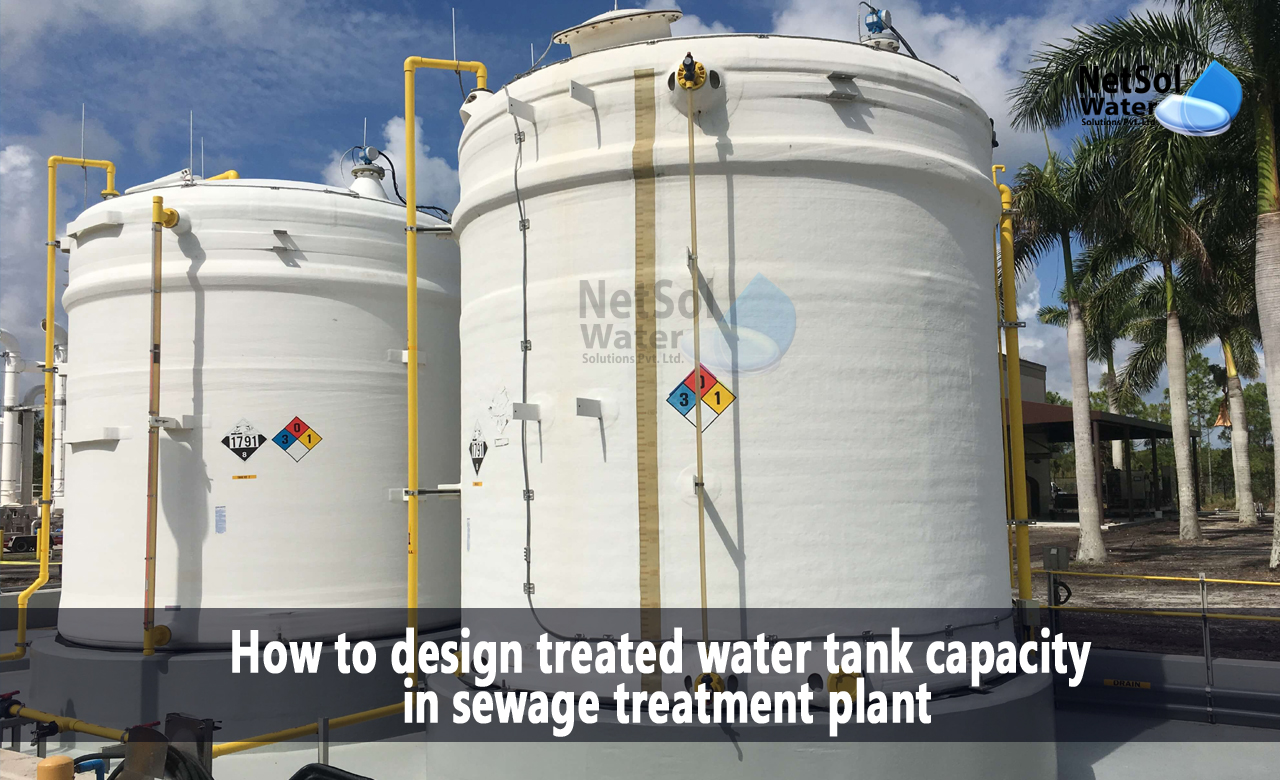How to design treated water tank capacity in sewage treatment plant?
Designing a treated water tank capacity in a sewage treatment plant is an essential aspect of wastewater management. The treated water tank serves as a buffer between the wastewater treatment plant and the receiving body, ensuring that the treated water meets the required quality standards before it is discharged. The capacity of the treated water tank is critical as it determines the retention time, which is the time required for the wastewater to be treated before it is discharged.
In this blog, we will discuss how to design the treated water tank capacity in a sewage treatment plant and the calculation formula with retention time in detail.
Retention Time
Retention time is the amount of time required for wastewater to be treated in a tank or basin. It is calculated by dividing the volume of the tank by the flow rate of the wastewater. Retention time is critical in wastewater treatment as it allows sufficient time for the wastewater to undergo the necessary physical, chemical, and biological treatment processes to remove pollutants and pathogens.
Designing the Treated Water Tank Capacity
To design the treated water tank capacity, the following factors must be considered:
- Flow rate: The flow rate is the amount of wastewater that is expected to be treated in the plant. It is calculated based on the population served or the industrial process involved.
- Peak flow rate: The peak flow rate is the maximum flow rate that can occur during a specific period. It is usually calculated based on historical data or estimated based on future projections.
- Retention time: The retention time is the time required for wastewater to be treated in the tank. It is calculated based on the desired effluent quality, which is determined by the regulatory requirements and the receiving water body's capacity.
The formula for calculating the treated water tank capacity is:
Treated water tank capacity = Retention time x Flow rate
The retention time is usually determined based on the desired effluent quality, which is determined by the regulatory requirements and the receiving water body's capacity. The regulatory authorities typically set the effluent quality standards, which wastewater treatment plants must comply with before discharging the treated water into the receiving water body.
To illustrate the calculation of the treated water tank capacity, let us assume the following:
Flow rate = 500 m3/day Retention time = 24 hours (1 day)
Using the formula above, the treated water tank capacity would be:
Treated water tank capacity = 24 x 500 = 12,000 m3
This means that a treated water tank with a capacity of 12,000 m3 would be required to meet the desired retention time of 24 hours for a flow rate of 500 m3/day.
Conclusion:
Designing the treated water tank capacity in a sewage treatment plant is critical to ensure that the treated water meets the required quality standards before it is discharged. The retention time is an essential factor to consider when designing the treated water tank capacity, and it is calculated by dividing the volume of the tank by the flow rate of the wastewater. The formula for calculating the treated water tank capacity is straightforward, and it involves multiplying the retention time by the flow rate. By considering the factors outlined above, wastewater treatment plants can design a treated water tank that meets the desired retention time and effluent quality standards.
Contact us on +91-9650608473 or send an email to enquiry@netsolwater.com to find out more.



